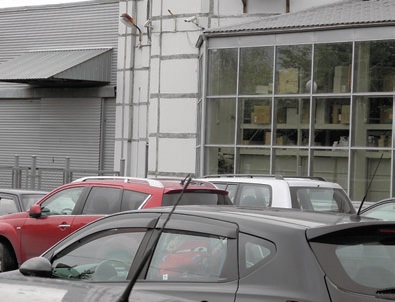
Practical aspects of using a video surveillance system.
Undoubtedly, video surveillance systems have long been an integral part of the equipment of any commercial enterprise.
However, in order to select the correct composition and the logic of the choice, the head of the security service must answer the most important question: is the video surveillance system a mandatory element and an integral part of the technical means of ensuring security, which «a priori» must be present at the trading facility (simply because it is «supposed to be», «everyone has it», etc.), or is it still a system by means of which the head of the security service really plans to reduce the losses of the trading enterprise.
When designing a video surveillance system, many factors are taken into account: the format of the retail enterprise (hypermarket, supermarket, discounter, convenience store, boutique, kiosk, etc.), the expected presence or absence of a permanent post of video surveillance system operators (hereinafter — CCTV), the expected cost of the project, the presence or absence of an access control system (hereinafter — ACS) and a cash register control system (hereinafter — CRS) at the facility, and other circumstances.
This article is intended to consider the practical aspects of using CCTV in a retail enterprise, and the reader will not see here technical terms and characteristics of the system's components.
Let's focus on two main issues:
- locations of camera installations and zones of expected control;
- the expected priority mode of using the relevant camera, real-time surveillance or viewing of the CCTV archive records for analysis and control of the situation «post factum».
As an example, we will focus on a medium-sized hypermarket from 5 to 8 thousand square meters (from 18 to 40 cash desks), which does not have an ACS and SCCO, but has a permanent post of CCTV system operators.
For the convenience of presenting the issues, we will conditionally divide the hypermarket into several large zones subject to control by means of SVN:
- adjacent territory (street cameras);
- entrance and checkout area;
- directly the hypermarket sales area;
- Administrative and household, utility rooms and production workshops (if there is a division of its own production);
- cargo area (loading/unloading and storage area of goods, landing stage).
ADJACENT TERRITORY
Video surveillance of this area is an integral part of the hypermarket's CCTV in the case where the hypermarket is located in a separate building and not on the territory of a shopping mall.
An exception may be cases where the trading enterprise is the «anchor» tenant of the shopping mall's premises or is itself the landlord of the retail premises.
An important point that must be taken into account when placing outdoor CCTV cameras is their installation location.
Mounting cameras directly on the building can significantly reduce the cost of the project, since placing cameras on elements of engineering and construction and other objects located at a certain distance from the building is associated with additional costs.
Unfortunately, this cannot always be avoided.
The technical characteristics of outdoor surveillance cameras should allow the use of these cameras at any time of the year, and accordingly should be protected from active temperature changes, precipitation, other weather conditions and other factors that can affect their normal functioning.
1. The central entrance area to the hypermarket.
This is the camera that usually has to be installed at some distance from the building (on elements of advertising banners, lighting poles, walls of nearby buildings, etc.).
It should cover the central entrance to the hypermarket, adjacent access roads, part of the parking lot for vehicles in the immediate vicinity of the central entrance, objects located in the area of the central entrance: ATMs, buildings for storing shopping carts, etc.
Most often, archival recordings of this camera are used. However, in some cases, for prompt response, it is recommended to use this camera in real time. In particular, if the external collection of the store
is carried out through the central entrance, it is preferable for the operator to monitor the situation around the cash-in-transit vehicle from the moment of its arrival until its departure from the parking area.
2. Parking of vehicles.
The location of the cameras for monitoring this area is determined in each specific case individually, taking into account the characteristics of the adjacent area. The recommended placement is on the corners of the building, oriented so that the control zones partially overlap each other.
The height at which the cameras are mounted is determined taking into account the possibility of their subsequent maintenance.
In addition, it is necessary to prevent the possibility of their theft. Accordingly, the recommended optimal height is 3.5 — 4 meters.
The angle of direction is selected taking into account the need to avoid illumination from natural light sources, as well as possible glare from nearby reflective elements.
As a rule, cameras monitoring parking are not used in real time.
More often, the archive of camera records is in demand in cases of accidents that occurred in the controlled area, and in cases of conflict situations and violations of public order.
In real time, they can be used by the operator to monitor the situation in the parking lot on days or hours of peak customer visits to determine the need to deploy additional employees to regulate vehicles.
3. Fire (evacuation) exits.
The need for video monitoring of fire exits is due to the fact that, in accordance with the requirements of fire inspections, they must be open (or more precisely, not locked) when customers visit the retail facility.
Which creates the risk of possible theft of goods by customers exiting through them with unpaid goods.
Sometimes, although it is prohibited, it is practiced to accept goods through them if all the loading gates of the landing stage are occupied. The installation of video cameras to monitor fire exits is carried out taking into account the availability of video surveillance of this zone by means of other video cameras monitoring the central entrance, parking or perimeter. Sometimes they fall into the control zone of cameras installed inside the hypermarket.
Accordingly, there is often no need for separate cameras to monitor the area in question. Since, as noted, it is possible to commit thefts through anti-theft gates (unfortunately, in my practice there have been such cases, goods were taken out in whole carts), there is a need to periodically monitor this area in real time.
4. Service entrance to the hypermarket.
Video surveillance of the service entrance to the hypermarket is mandatory, since this is one of the potentially dangerous areas in terms of the possibility of unauthorized entry into the hypermarket building.
Video monitoring is carried out by means of an outdoor surveillance camera, usually installed directly above the entrance, on the wall of the building or its prominent elements. As a rule, archival recordings of this camera are used to analyze emergency situations that occurred at night. In addition, through video monitoring of this zone, it is possible to track the timeliness of the arrival and departure of the commission for opening and closing the hypermarket, unauthorized contacts of hypermarket employees with strangers, violations of the requirements of the internal facility regime, etc.
5. Perimeter of the building.
In practice, it is the least controlled zone. However, cameras for its control must be included in the general video surveillance system of the hypermarket. They are usually mounted in the same way as cameras that control the parking of vehicles, that is, at the corners of the building, at a height of 3.5 — 4 meters.
If there are no more important controlled areas on the controlled side of the building
objects (for example, fire exits), one camera per side is often quite sufficient. If more detailed control is required, two cameras are installed, oriented towards each other. They are practically not visible in real time. Archive recordings are used if necessary.
6. Unloading area for suppliers' vehicles.
An area subject to mandatory video surveillance. The choice of installation location and number of video cameras is determined primarily by the number of loading gates and their configuration.
It is preferable that the technical characteristics of the cameras allow one to see the state registration number of cars located in the control zone. It is also desirable that the cameras be color, varifocal and with infrared illumination.
As a rule, video cameras for monitoring this zone have to be installed at some distance from the hypermarket building, on engineering and construction elements and other objects — power line supports, lighting poles, etc. at a height of 4-5 meters.
Installation of cameras directly on the building is permitted if there are no more than 3 cargo gates.
The cameras must be oriented in such a way as to reliably monitor the areas adjacent to each cargo gate, as well as the area where the vehicles are waiting to be unloaded.
However, it is preferable to position the cameras at a slight angle so that the vehicles being unloaded do not completely block the view of the open cargo gates.
This zone can be monitored both in real time and in the mode of viewing the archive of SVN records.
The active use of these cameras by hypermarket officials is practiced: deputy director, director, manager — in real time to determine the proper organization of the process of receiving suppliers' vehicles.
The security service uses the recordings from cameras monitoring the specified area to investigate cases of theft by staff and suppliers, to identify cases of violation of access control and internal facility regulations, public order violations, etc.
ENTRANCE AND CHECKOUT AREA
It seems that video surveillance of the following areas related to the entrance and checkout area of a retail enterprise is mandatory.
1. The central entrance to the hypermarket.
A very important area subject to mandatory video surveillance.
The so-called «face» video camera is designed to record the image of all visitors to the hypermarket.
Moreover, to work with the video archive and print out photographs of dishonest buyers for subsequent orientation of the security personnel or security officers, a fairly good image quality is required.
Accordingly, the technical characteristics of the camera designed to solve the specified tasks must be appropriate.
The camera must be color, with good resolution, variable focus.
It would not be superfluous to have a «day/night» function, infrared illumination and other features that allow you to get a good image in any conditions.
When choosing a location for installing a camera, it is necessary to take into account the direction of both natural and artificial lighting, the presence of reflective elements that can negatively affect the quality of the image, the possibility of glare and other interference that can prevent proper identification of the visitor.
In real time, this camera is used extremely rarely, but for post-event investigations, its importance is difficult to overestimate.
I do not dare to give any specific recommendations on the location of this camera, since the choice of location directly depends on many individual factors inherent exclusively to a particular store.
This could be a foyer, a corner of some rental premises, a metal bracket fixed to the ceiling or elements of the building structure, etc.
2. Entrance to the central cash register.
This zone is classified as the «entrance and checkout zone» conditionally, since the central cash desk can be located in other control zones of the hypermarket, for example, in the administrative and household complex of premises, the entrance to it can be from the sales area, etc.
Regardless of the location, the camera monitoring this zone is designed to perform very specific functions.
First of all, this is the function of monitoring the progress of internal and external collection.
The technical characteristics of this camera are not very important.
A «budget» black and white version is quite sufficient.
It would be even better if this control zone could be «covered» by another camera, oriented for priority control of some other zone.
But the solution to this issue will depend on local features.
3. Entrance to the security room.
The security room or premises is often simultaneously the premises in which the monitors of the video surveillance system, the so-called «monitor room», are located, as well as the workplace of the «senior shift security officer» or «senior shift security officer».
It is common practice to prohibit persons from visiting this premises, with the exception of a strictly defined circle of persons.
It is precisely the provision of a management decision to prohibit visiting this room that is the main function of the camera, which ensures control of this zone.
As in the previous case, the camera may well be of a «budget» price category.
Moreover, in small-format stores (up to 12 cash desks), it is possible to completely abandon the targeted control of this zone, provided that there is a camera in the security room itself.

4. Premises for checking customers for theft.
Usually, the room for resolving conflict situations with customers, the so-called «inspection room», is located near the central entrance to the hypermarket and the security personnel's premises.
Control of this room can be important from the point of view of possible customer complaints about illegal actions of security personnel.
The premises are usually small in area, and a black-and-white dome camera mounted on the ceiling or wall of the room is sufficient to monitor it.
As mentioned above, video archive recordings may be needed as evidence in court.
In real time, this premises can be monitored by the head of the security service to assess the work of subordinate employees with customers suspected of committing thefts, from the point of view of tactics and legality of their actions.
5. Storage lockers or «bag» area.
The zone is subject to control due to the potential for theft of customers' personal belongings.
This zone can be controlled by video cameras that are specifically oriented to other zones: the rental zone, the checkout area, etc.
If this is possible, there is no need to install a separate camera to control this zone.
It is preferable to use a color camera with good resolution for possible subsequent identification of the person who committed the theft.
It is mainly used in the video archive viewing mode.
6. Information desk area or location of the manager supervising the work of cashiers.
Often, it is within the control of this camera that emergency situations with customers are considered: the return of goods by customers is processed, the analysis of forgotten and lost items by customers is carried out, and other issues addressed by customers are resolved.
The camera is necessary to control these procedures.
The camera installation location is determined taking into account the location of the information desk.
A camera with good resolution is preferable, a black and white version is acceptable.
In real time, the camera can be controlled by the head of the security service or other store managers: deputy director, director, etc. — to monitor the current situation at the checkout line and the work of the manager.
In the video archive viewing mode, the camera is used to resolve controversial issues and emergency situations.
7. Entrance to the administrative and utility complex.
The camera is designed to monitor the movement of personnel, compliance with the requirements of the access control and internal facility regime, internal work regulations, as well as to analyze situations related to unauthorized entry into the store's service premises by unauthorized persons.
It is mainly used in the video archive viewing mode.
8. Cash desks.
One of the most important areas subject to mandatory video monitoring in a retail enterprise. The number of cameras directly depends on the number of cash desks and the configuration of the cash desks. If the cash desks are double, it is permissible to use one camera for two cash desks.
If the cash desks are single, it is preferable to use a separate camera for each cash desk.
Cameras should be color with good resolution and variable focus.
The location of direct installation is determined taking into account the configuration of engineering, construction and other communications, the configuration of marketing elements, the width of the checkout area and the presence of any trade, advertising or other objects on it, etc.
Cameras can be mounted on a special box, separate brackets fixed to the ceiling, or on checkout boxes, etc. If the width of the checkout area does not exceed 2.5-3 meters, there are options for mounting on the walls of the rental area.
The cameras should be oriented in such a way that the cashier's workplace, the cash register monitor, the cash register tape, the cash register passage, the anti-theft frames, the storage area for scanned goods, and a section of the checkout area at least 0.5 meters wide are clearly visible.
In the future, the cameras should take the entire length of the cash register tape and at least a small part of the sales area.
The functionality of cameras monitoring cash registers is very wide, they can be actively used both in real time and in the mode of using archived recordings.
As a recommendation, I would like to note that when forming the technical specifications, it is necessary to provide for the maximum capacity for archiving video recordings of these cameras.
In my opinion, it should be at least 3-4 months.
In real time, video monitoring of cash transactions allows you to:
- monitor the work of cashiers;
- identify errors and violations by cashiers in the process of servicing customers that have resulted in damage (sale of incorrectly sorted goods, errors in the multiple quantity of scanned goods, unscanned goods, etc.);
- identify theft of funds by cashiers;
- detect theft of goods by cashiers (in collusion with customers — partial scanning of goods, intentionally unscanned goods, unjustified cancellation of a cash receipt, use of a copy of a cash receipt, appropriation of goods left by customers or goods that the customer refused to purchase, etc.);
- detecting theft by customers (for example, removing unpaid goods in a shopping cart, unpaid goods in the hands of children, etc.);
- identify violations by cashiers that are not related to causing direct damage, but may lead to a decrease in customer loyalty (violations of customer service standards and rules, violations of the established dress code, violations of internal work regulations, violations related to the operation of a cash register machine, violations during the collection of funds, etc.).
In the mode of viewing the archive of video surveillance recordings, control of cash registers allows you to:
- identify errors and violations by cashiers about which complaints were received from customers;
- based on a customer complaint, identify errors by cashiers made during settlements with customers (for example, did not give change)
- check the received information about thefts committed by cashiers and customers;
- if there is a confirmed fact of theft, identify the stolen goods to specify the nature and amount of damage caused (an important evidentiary factor for the investigation of a criminal case and trial).
9. Checkout area.
Also an area subject to mandatory video surveillance. The number of cash registers depends on the length of the checkout line.
With a small number of cash registers (up to 12 cash desks), one camera oriented from the 1st cash register towards the cash register line at a slight angle is sufficient.
In the case of a longer cash register line, we have encountered two options (although there may be others) for the location of cameras monitoring the checkout area.
In the first option, cameras are installed at both ends of the checkout area and oriented towards each other.
In the second option, cameras are installed on the walls of the rental area premises and oriented at an angle so that their view allows monitoring of the rental area and, in the long term, 5-6 cash desks.
The number of these cameras depends accordingly on the number of cash desks. It is preferable to use color cameras with good resolution.
Using cameras in the cash register area in real time allows you to monitor the current situation in this area, the work of security personnel and managers who ensure and control the work of cashiers, monitor the absence of situations related to the violation of public order, identify violations of the internal facility regime by personnel, etc.
In the video recording archive viewing mode, cameras are used for post-event monitoring of conflicts and other emergency situations in the controlled area.
10. Rental area.
Monitoring of this area is necessary if the lessor is directly a trading enterprise.
Most often, the rental zone is located opposite the cash line in the checkout area. In this case, cameras monitoring the checkout area are sufficient to monitor it.
In other cases, the installation of cameras to monitor rental premises depends on their number, configuration, location, etc.
Accordingly, it is impossible to give any more specific recommendations within the framework of the issues under consideration.
11. ATM and other terminal installation area.
Video surveillance of this zone is currently relevant due to the increased incidence of crimes related to theft and other illegal actions.
As a rule, separate cameras are not required, since most often this zone falls within the scope of cameras monitoring the above-mentioned zones.
Post-event monitoring is usually used.
12. The location of other objects related to the hypermarket's area of responsibility.
Often, in the entrance and checkout area, there are other objects that are not directly related to the hypermarket, but are within its area of responsibility (for example, a children's cafe, a work area for customer service managers, etc.).
The decision on targeted video monitoring of these areas should depend on their number, location, the functional need to monitor them from the point of view of ensuring security, the possibility of monitoring them with other video cameras, and other factors.
HYPERMARKET SHOPPING FLOOR
Perhaps the most important component of the overall hypermarket video surveillance system.
Of course, most security managers want to see literally «everything» and almost «immediately».
It is possible to install video cameras to monitor literally every meter of the retail space, but will such costs be justified and will operators be able to monitor a huge number of cameras?
The number of cameras, their specific location, technical specifications and some other issues are individual and are determined based on the focus of the trading activity, the area of the sales floor, the arrangement and location of pallets, racks, departments by product groups, etc.
When installing video cameras in the sales area and placing them on the video surveillance system monitors, it is necessary to follow a certain sequence, taking into account the direction of movement of the main customer flow when moving around the sales area.
We will try to determine the priority areas of the sales area that are subject to mandatory video monitoring.
1. Entrance to the sales area.
A zone subject to mandatory video monitoring. The installation location is determined based on the specific location of the retail equipment.
A color camera with good resolution and variable focus is desirable.
The camera's view should include the entrance turnstile itself, the security officer's post, the exit of customers without purchases, the area where shopping carts are located, and the adjacent territory of the sales floor.
Video surveillance is important from the point of view of monitoring the security officer's duty at the «entrance to the sales area», compliance with the rules for dealing with customers and visitors, the availability of free shopping carts, identifying cases of unpaid goods being taken out through the exit for customers without purchases, monitoring compliance by personnel with the internal facility regime.
In the mode of viewing archive recordings, video surveillance is often used to verify the credibility of customers' arguments regarding entering the sales area with goods purchased elsewhere, and other controversial situations.
2. DVD and CD display area.
Often this product group is displayed in the immediate vicinity of the entrance to the sales area, and when determining the location of the video camera, it is necessary to take into account the possibility of monitoring this area by a security officer at the «entrance to the sales area» post, as well as the degree of protection of the goods in this group by anti-theft elements.
When using anti-theft boxes (in which the displayed goods are directly placed) for 100% of the display, it is possible that the need for targeted video monitoring of this area disappears.
If only anti-theft tags are used, which are easily removed by dishonest buyers, it is still preferable to install a camera, since the goods are subject to theft.
3. Printed products display area.
Control of this area is necessary, since the goods are also subject to theft, but they are rarely equipped with anti-theft elements, since often suppliers of printed products refuse to take back goods equipped with anti-theft tags.
Control is also important for resolving issues that arise at the exit from the sales area.
Often, customers leaving with unpaid printed goods (this is especially true for periodicals) refer to their purchase at other retail outlets.
Used both in real time and in post-event control mode.
4. Areas for displaying small-piece goods in the NON FOOD category.
Small-piece goods in the «non food» category include: small haberdashery (ties, belts, wallets, document covers, gloves, etc.), toys for newborns, small souvenirs, small kitchen accessories, communication accessories, small photo accessories, office supplies, small car accessories (air fresheners, napkins, etc.), shoe care products, small tools for home repairs, lighters and gas canisters, and much more.
When determining the need for targeted video monitoring of the above-mentioned product groups, it is necessary to take into account the degree of their protection by anti-theft protection elements, and during the operation of the store, conduct a constant analysis of product losses with the aim of a more functional rearrangement of the available video cameras.
I think that there is no need to use only color cameras for this purpose; it is enough that the resolution is sufficient to obtain a clear picture.
When installing video cameras, one should take into account the possible risks of their breakage or demolition associated with ensuring business processes, — rotation of inventory using mechanical means of moving goods, etc.
Cameras that monitor the display of small-piece goods are used by video surveillance operators, as a rule, in real time.
5. Pallet display areas.
Usually, so-called «panoramic» video cameras are used to monitor pallet display areas, which simultaneously perform another important function — they allow video surveillance operators to «follow» a customer suspected of dishonesty around the sales area.
Based on this function, it is preferable to use color video cameras to more easily identify a suspicious customer by the color of their clothing. These cameras are usually used in real time.
6. Elite cosmetics and perfume display area.
Very often stolen goods, so it makes sense to organize targeted control of the department with the display of the specified product groups.
It is preferable to use color video cameras. They are controlled in real time.
Post-event control is carried out if the detainee claims that he purchased the goods found on him in another store.
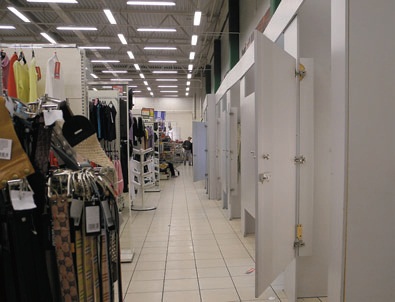 |
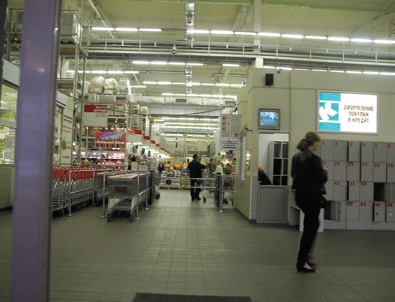 |
7. Elite alcohol sales or display area.
Elite alcohol is sold differently in different stores. Somewhere it is on open display, somewhere — in locked display cases, and it is also sold in separate departments with a separate cash register.
Based on the conditions of implementation, a decision is made to organize video monitoring of this zone. If elite alcohol is in an open display, the camera should capture the control zone as fully as possible, while providing a good image.
It should be remembered that the cost of the goods of this product group most often allows their theft to be regarded as a criminal offense, in accordance with which the recordings of cameras monitoring the elite alcohol zone are very often used as evidence in criminal investigations.
If elite alcohol is sold in a separate department with a cash register, it is mandatory to install a separate video camera focused on the cashier's workplace and the cash register.
8. Zone for displaying strong alcohol that does not belong to the elite category.
The volumes of cheap alcohol sales often do not allow it to be equipped not only with bottle sensors, but also with soft anti-theft sensors, which thieves happily use. Accordingly, the category of thieves is, as a rule, not «professionals», but «amateurs», and they like not only to steal, but also to actively consume the stolen goods, which allows them to be identified quite successfully.
Video monitoring of the area where alcohol is displayed that does not fall into the «elite» category is mandatory. The camera can be used in color (if the project budget allows) or in black and white. Experience shows that targeted surveillance by an operator of only this area in real time will definitely yield results in identifying an «impulse thief» after some time.
9. Exit areas from the sales area to the landing stage.
Cameras for monitoring exits from the sales area to the landing stage (their number is determined by the number of such exits) are preferably installed in such a way as to monitor other nearby areas of the sales area.
Or use video cameras for this purpose, specifically focused on more important areas. As a rule, black and white video cameras are sufficient.
The main purpose of video surveillance of this area is to monitor the movement of personnel, their compliance with the internal facility regime, and to identify cases of unauthorized entry of outsiders into the service areas of the hypermarket.
Most often used for post-event monitoring (for example, to identify an employee who took out liquid goods along with the garbage, etc.).
9. Checkout area.
A very important control area.
It is important because this area contains small-piece goods on display, which are quite actively stolen, especially by young visitors (due to their specificity — chocolate, chewing gum, chewing marmalade and other «children's joys»).
The number of cameras for monitoring this area is determined based on the length of the checkout line.
Control (with rare exceptions) is carried out in real time.
It is preferable to use color cameras, however, a sufficient number of black and white cameras will also allow functional control of the specified zone.
The management of the retail enterprise controls this zone from the point of view of the formation of queues at the checkout.
10. Zone for the sale of finished products of our own production.
The zone is controlled primarily for the use of unpaid goods.
Moreover, both by customers and hypermarket staff. This group of goods is rarely subject to theft, but not everyone can resist the temptation to consume unpaid goods directly in the sales area.
A black and white video camera for real-time monitoring is often quite sufficient.
11. Areas for displaying expensive gastronomic products.
Gastronomic products subject to theft include expensive sausages, elite cheeses, meat and fish delicacies (including caviar), frozen seafood delicacies, etc.
It seems that targeted control of the display area for these product groups is necessary.
In general, the area of the gastronomic department, including refrigerated cabinets, wall-mounted refrigerated display cases, etc., can be sufficiently controlled by means of «panoramic cameras».
12. Self-service scales. Mandatory control area.
A fairly large number of thefts are committed through various machinations on self-service scales.
The most common of them are the following:
- the buyer adds the goods to the package with the already weighed and stamped goods (obvious theft);
- while weighing the expensive goods, the buyer enters the code of the cheap goods (fraudulent actions).
To monitor this area, it is necessary to install color varifocal video cameras with good resolution.
The cameras are usually mounted on brackets fixed to the ceiling directly above the scales.
They must be oriented so that the viewing area includes the buyer's manipulations with the goods and the self-service scale monitor. They are used both for real-time monitoring and in the video archive viewing mode.
13. Expensive grocery display area.
Grocery products that are subject to theft primarily include packaged nuts, oriental mixes, beer snacks, etc.
Video monitoring of the display area for this product is desirable, but is not implemented everywhere, so its necessity should be assessed based on the budget of the project being implemented for installing a video surveillance system. It is desirable to implement it in real time.
14. Seasonal product display area.
When talking about monitoring seasonal goods, we should first of all keep in mind small goods that are stolen en masse — these are seeds and other planting material, as well as insect repellents.
For targeted monitoring of the display areas of these product groups, it is advisable to have mobile, movable cameras, camouflaged if possible.
When monitoring in real time, we should not forget about the category of buyers who steal these product groups. Seeds are stolen almost exclusively by women, and mostly by elderly women.
15. Hosiery display area.
Some items in this group are subject to very active theft (especially women's tights), so targeted video monitoring of this area is preferable.
Susceptibility to theft is determined not only by the demand for this product, but also by the fact that it is often impossible to protect it with anti-theft protection elements.
In addition, it is usually stolen without packaging, and even if an unscrupulous buyer is identified at the exit, in the absence of supporting video surveillance recordings, proving the fact of theft can be quite difficult.
Usually, goods are removed from packaging not in the display area, but in other places on the sales floor, so real-time monitoring rarely yields results.
Post-event control is important to prove the fact of theft.
16. Coffee display area.
Some items in the «coffee» group are quite expensive goods, and it is precisely because of their theft that I allowed myself to allocate the area for displaying this product into a separate zone subject to video monitoring. The location of the camera, its technical characteristics and other aspects are determined individually. As a rule, it is used to monitor the zone in real time.
17. Zone for packing weighed sweets.
The area for displaying and packing bulk sweets is monitored primarily for preventive purposes. Customers who «taste» and stuff handfuls of sweets into their pockets and handbags do not cause significant damage, but the discovery of such facts makes them think.
To ensure the functional efficiency of the camera monitoring this area, it must be color, with good resolution. It is most often installed on a bracket fixed to the ceiling, or on engineering construction elements of the sales area.
It is usually used in real time.
19. Fitting rooms.
A very specific control zone.
The specificity of the zone is due to ethical and legal issues related to the possibility of its video monitoring.
Speaking about the legal aspects of this issue, it should be noted that there are no legal norms directly prohibiting the installation of video cameras in fitting rooms.
However, is it possible to reason in this case from the point of view: «Everything that is not directly prohibited by law is permitted»?
However, there are enough rules regarding the «privacy of private life», and a customer who visited a fitting room and discovered that he was «filmed» by a video camera can refer to them.
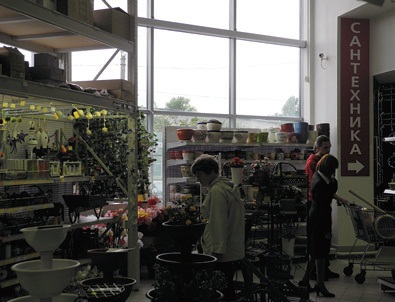 |
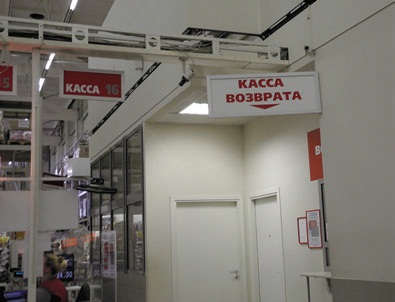 |
Based on the meaning of most legal norms, if there is an information sign immediately before the entrance or inside the fitting room that there is video surveillance, then the buyer, using it, «de-facto» agrees to video filming.
In this case, it would hardly be legitimate to talk about a violation of the «inviolability of private life». Any further use of the video surveillance camera recording without the consent of the citizen may entail serious legal consequences.
Accordingly, installing camouflaged (hidden) cameras in a fitting room other than on the basis of a court decision is absolutely illegal.
However, a fairly large number of thefts are committed using fitting rooms.
There are not so many options for how to carry out video surveillance of the area in question:
1. Install a hidden video camera. As already noted, this option is illegal, and the manager making this decision acts at his own risk.
2. I have encountered this solution: a dummy small video camera is installed in a fitting room without placing an information sign so that it is not hidden, but also not conspicuous.
At the same time, a maximally camouflaged camera is also installed.
In the event of a claim from a bona fide buyer (caught thieves rarely complain, especially since the method of identifying the fact of theft is not communicated to them), it is explained to him that the booth is a dummy and, accordingly, there is no violation of the law here.
There is still a risk in this case, however.
3. The most optimal solution from a legal point of view, although less effective from a practical point of view, is to install video cameras aimed directly at the entrance to the fitting rooms.
In this case, the video surveillance operator can track in real time (or in post-event monitoring mode) what product the customer enters the booth with and what product he leaves with.
ADMINISTRATIVE, HOUSEHOLD, PRODUCTION AND SUPPORT ROOMS
Installation of video surveillance cameras in the utility rooms of a hypermarket as an integral part of the overall video surveillance system is designed to ensure control over the personnel of the retail enterprise.
As general recommendations for the installation and technical characteristics of cameras used indoors, the following can be noted: black and white video cameras with a viewing angle that allows them to cover the maximum area of the monitored room are usually used; they are usually mounted either on the ceiling or on the wall of the room, oriented in such a way that the elements of structures, equipment and other objects present in the room do not interfere with the view.
Let me emphasize once again that the list of premises is approximate, we will consider only the most typical of them, the presence of which is characteristic of any hypermarket.
1. Security room (room for video surveillance system operators).
In stores of the format we are considering, the security room (mostly the workplace of the senior security guard) is also the room in which the hypermarket's video surveillance system monitors are located and video surveillance operators are on duty.
The presence of video surveillance of this room is more relevant from the point of view of monitoring the work of employees by the head of the security service.
Sometimes, for this purpose, the image of this camera is made inaccessible (hidden) for the video surveillance operators themselves and is displayed on the monitor of only the head of the security service.
It is especially important for monitoring the duty of the shift supervisor at night.
Post-event monitoring is also relevant in the event of emergency situations: fire, unauthorized entry, etc.
2. Central cash desk.
Mandatory control zone.
The relevance of the zone is due to the fact that significant cash funds accumulate in this room during certain periods of time.
Accordingly, it is of most interest to intruders.
The work of the senior cashier is monitored in real time, and processes related to the movement of funds are monitored — periods of internal and external collection.
In the post-event monitoring mode, records are used to review episodes related to unauthorized entry, the commission of criminal offenses, abuse or violations of the senior cashier or cashiers.
Post-event monitoring of the final internal collection moments is important, when a significant number of violations and abuses by cashiers are revealed (failure to comply with the prescribed procedure for carrying out collection, misappropriation of surplus funds, violations in the process of filling out financial documentation, etc.).
3. Premises of the post «service entrance».
It is also mandatory to carry out video surveillance of this room.
The post «service entrance» primarily ensures the most important elements of the internal facility regime — control of the moments of arrival of personnel to the hypermarket and departure at the end of the work shift.
Monitoring is carried out in real time, often directly by the head of the security service or the senior guard on duty.
It is especially important to monitor the process of checking personnel for unpaid goods upon leaving the shift.
Post-event monitoring and the use of recordings from this camera is carried out in a variety of situations.
Often, the recordings are used as evidence in the investigation of criminal cases involving crimes committed by the staff, since police officers often conduct searches of staff suspected of committing thefts in this room.
It is also important when conducting internal investigations and in some other situations.
4. Lunch room.
Video surveillance in the canteen premises is carried out for the purpose of monitoring personnel, compliance with internal work regulations, identifying cases of employees consuming unpaid goods, observing the established schedule of regulated breaks, etc.
In addition, an important element of monitoring this premises is monitoring the canteen workers themselves.
As a rule, they are employees of their own production units, and practice shows that this is one of the most «critical» categories of personnel in terms of abuse and theft.
5. Data entry operator premises.
A room that is actively visited by both employees and managers who carry out work in the cargo area, as well as representatives of suppliers, sales representatives, freight forwarders, etc.
Video surveillance is used to monitor the listed categories of employees, and to ensure compliance with the rules of the access control and internal facility regime.
In post-event mode, it is used to conduct internal investigations and ongoing checks on various work episodes.
6. Premises of the heads of departments (sections) of the hypermarket.
Often, video monitoring of this premises is of interest to the administrative management of a trading enterprise: deputy director, director, manager, head of the security service.
The use of working hours, operating mode, interaction with sales representatives of supplier companies and other working moments are monitored.
Recordings are used both in real time and in post-event monitoring mode.
7. Manager's reception.
Addressable video surveillance of this room is not always carried out.
It often happens that it is enough for the entrance door to the reception area or directly to the manager's office to fall into the viewing area of a camera that is specifically oriented to another control zone.
As a rule, it is used in the mode of viewing the archive of video recordings during inspections and internal investigations.
8. Classroom (meeting room).
If such a room is available in a hypermarket, it is preferable to provide it with video surveillance.
As a rule, such rooms are equipped with audio and video equipment, computers and office equipment, and other means intended for the implementation of the educational process and holding working meetings.
It can be important from the point of view of conducting inspections and investigations into the failure of technical equipment (in other words, finding out who broke the equipment), ongoing control over the implementation of administrative measures by the enterprise management, etc.
9. Entrance doors to the personnel undressing rooms.
The personnel undressing rooms themselves (men's and women's locker rooms) are a fairly «critical» zone from the point of view of committing various types of offenses, both disciplinary and administrative-criminal.
These violations may be related to theft (hiding goods in clothes or for subsequent removal), and the most common — the use of unpaid goods.
These facts are evidenced by packages of unpaid goods hidden in various «secluded» areas of the premises. Including facts of drinking alcoholic beverages.
In addition, it is in this area that crimes are committed related to the theft of personal belongings of employees (respectively, by other employees) — cash, expensive means of communication and other personal belongings.
As a rule, video surveillance of these premises themselves is abandoned due to the specifics of their functional purpose, ethical and legal restrictions.
If responsible persons decide to video surveillance of changing rooms, they should remember the provisions that were voiced in the section «Control of fitting rooms» and be prepared for possible negative legal consequences.
Taking into account the above, video surveillance of the entrance doors to these premises is necessary.
It is not as functional as monitoring the premises themselves, but it plays a decisive role in conducting internal investigations, as well as investigations into criminal offenses related to the theft of personal belongings and funds of personnel.
For better subsequent identification of persons entering and leaving the premises, it is advisable to use video cameras with the best possible resolution to monitor this area. Cameras are used mainly in the post-event monitoring mode and as evidence in the investigation of criminal offenses.
10. Entrance doors to the offices of administrative personnel (HR manager, head of security, deputy head of the hypermarket, engineer, head of the in-house production department, etc.).
By means of video surveillance of the specified zones, the movement of administrative personnel, compliance with the internal work regulations and internal regime, the mode of functional use of working time, the identification of facts of unauthorized entry of third parties into administrative premises and other working moments related to the normal functioning of the trading enterprise are monitored.
Used for conducting inspections and internal investigations, as well as for ongoing control by the management of the enterprise.
10. Entrance doors to utility rooms (technical workers, electrical panel, etc.).
Pursues the same goals as those specified in the previous section, to monitor our own technical personnel, employees of cleaning companies, etc.
11. Premises for packing weighed goods.
First of all, monitoring of these premises is necessary in order to identify cases of personnel using unpaid goods in the workplace.
Therefore, it is important to control not all the premises for packaging, but specifically those where ready-to-eat goods are packaged: nuts, fruits, sweets, cookies and other products ready to eat without additional heat treatment.
It should be recognized that, unfortunately, in practice, the control of these premises is not very functional and the detection of such facts in real time is extremely rare.
Based on this, responsible managers often limit themselves to installing dummy video cameras in packaging premises in an attempt to reduce the cost of a project for installing a VHS.
I think that in some cases such an approach is entirely justified.
12. Premises of in-house production workshops.
As already noted, practice shows that the category of in-house production employees belongs to the «risk group» in terms of susceptibility to theft.
It is impossible to give specific recommendations for targeted monitoring of workshops and other premises of in-house production units, since everything depends on their configuration, quantity, specification, location, etc.
It seems that preference should be given to those premises where there is the possibility of eating finished products (baked goods, salads, confectionery shop, hot production, etc.).
However, control of other premises can also be quite important.
For example, in the meat and fish semi-finished product packaging shops, the following method of theft is encountered (we ask SP employees not to perceive this information as a guide to action!) — expensive products (for example, premium meat tenderloin, red fish fillet, etc.) are hidden in cheap products (offal, soup set, etc.), after which they are frozen, weighed, and everything is ultimately purchased at the cost of the product in which the piece of delicacy is «wrapped».
It is also practiced to «tie» layers of tenderloin to the body, hide in intimate places not only finished products, but also semi-finished products (up to bags of minced meat), etc.
In addition, when choosing a room subject to video surveillance, one should focus on the need to control technological processes associated with potential risks for a retail enterprise, for example, the possibility of fire.
And in conclusion, I would recommend taking into account one more point.
Often, even if a retail enterprise does not work for customers around the clock, in its own production workshops, work on manufacturing products is carried out at night.
In this case, the ability to video monitor personnel at night by the senior shift security officer is important.
CARGO AREA (LOADING LANDING PLATFORM)
Video monitoring of the cargo area (loading/unloading area and temporary storage of goods) is important not only from the point of view of personnel monitoring, but also from the point of view of preventing and detecting theft by personnel, as well as investigating significant shortages of goods.
In connection with the stated objectives, the general requirement for organizing video surveillance on the landing stage is the absence of «dead zones», i.e. zones not covered by video surveillance.
Based on this requirement, these recommendations should be used.
It is assumed that it is mandatory to orient cameras to monitor the following landing stage zones.
1. Goods acceptance zones.
Some of the most important zones subject to mandatory video surveillance! The number of video cameras directly depends on the number of loading gates on the landing stage.
The technical characteristics of video cameras are determined by the importance of both post-event and online viewing.
Color video cameras with the best possible resolution and variable focus are highly recommended.
When creating the technical specifications, it is advisable to provide for significant archiving of video camera data records.
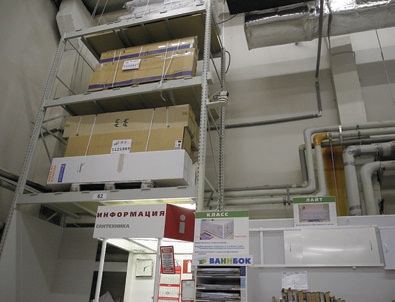 |
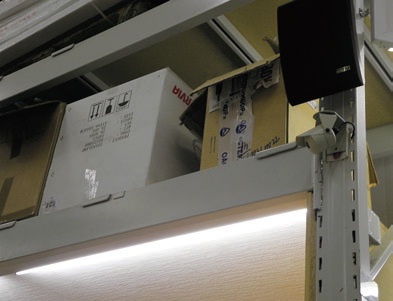 |
It is desirable that it be at least 3-4 months.
When choosing a place to install video cameras, the following should be taken into account:
- orient the camera in such a way as to provide the clearest possible picture of the area where the goods are being received — the area of open landing stage gates, the area where goods are being stored and unloaded directly from the vehicle, the area where the manager who receives the goods is located, the location of the supplier's representative, the area where the scales are located, the area where the acceptance documentation is filled out;
- it is desirable that when monitoring this area, a small perspective towards the open body of the unloaded vehicle and the vehicle's state registration number are visible;
ensure that the camera is not «illuminated» by daylight when the cargo gates are open; - ensure that the viewing area is not obstructed by engineering and technical elements of the building structure and other objects (empty pallets, cargo containers, etc.). Addressable video monitoring of this area in real time is carried out to check operational or other available information about possible violations or abuses:
- there is information about the dishonesty or negligence of the goods acceptance manager;
- there are suspicions of theft committed by a specific representative of the supplier;
- there are significant shortages in any product group or specific product item, the causes of which could not be reliably determined;
- control over the acceptance of goods belonging to the «risk group», i.e. for which there are the greatest losses or which are most susceptible to theft due to the possibility of their «left» sale, etc.
Post-event control of this zone is no less important and is also used quite often.
The recordings from cameras monitoring the goods reception area are of the greatest importance when conducting internal inspections and investigations into significant shortages of goods.
During the inspection, the head of the security service, analyzing the data of the program for recording the movement of goods, primary documentation on the movement of goods and the archive of video surveillance records, can with a sufficient degree of probability, and often with certainty, determine the official or employee through whose fault the goods were «lost».
In this case, the data from the video camera recordings can play an evidentiary role both in bringing the person to disciplinary or other legal liability (if the intent of the person is proven), and in the procedure for collecting from him material damage caused to the Company.
2. Entrance doors to cold rooms.
A fairly important area from the point of view of monitoring the movement of goods across the territory of the cargo area.
More often, post-event monitoring is necessary, for example, in cases of investigations into the facts of spoilage of goods due to violations of storage conditions.
For example, perishable goods were not placed in refrigerated chambers due to the fault of an official.
In addition, refrigerated chambers are the work area of loading and unloading operators, who are also a fairly «critical» category of employees in terms of both various violations and theft.
In practice, black and white video cameras are often used, allowing for the identification of an employee with sufficient confidence.
3. Entrance doors to in-house production workshops.
The importance of video surveillance of this area is determined by the same provisions that we outlined in the section “In-house production workshop premises”, — this is surveillance of SP employees, detection of thefts committed by employees, surveillance of the movements of employees working the night shift, etc.
4. Cardboard and polyethylene pressing area.
Work area of either the trading enterprise’s own employees or the employees of the enterprise that ensures the removal of this type of production waste.
A fairly common violation (which, if the employee performing the pressing is not careful enough, can result in damage) is the removal of liquid goods along with the packaging by inattentive employees, usually sales consultants, which the employee simply did not notice.
Despite the apparent insignificance of the episodes, there are cases when quite expensive goods are removed and pressed in this way.
The second direction of control of this zone is to identify employees planning to commit theft.
The storage area for packaging containers is one of the most «popular» in terms of so-called «bookmarks», that is, hiding goods on the landing stage for the purpose of subsequent theft.
If security officers discover such a «bookmark» only the presence of video surveillance will allow them to identify the person planning to commit the theft.
Taking into account the above, post-event monitoring is usually relevant.
5. Garbage storage area.
All of the above can be equally applied to this area.
It is even more critical in terms of the potential for theft, since the «bookmarks» in it are committed by employees who dispose of waste that is not subject to compaction.
6. Panoramic cameras of landing zones
In this case, we are talking about cameras that monitor the entire territory of the cargo area, giving a more general picture than cameras that are specifically focused on specific areas.
They are designed for maximum coverage of the entire area and tracking the employee's route of movement during an inspection or investigation of specific facts.
Knowing the time and direction of the route, other video cameras allow for detailed recording of the employee's actions.
We repeat that it is preferable to avoid so-called «dead zones» on the landing stage, therefore the installation location and technical characteristics of these cameras are selected taking into account the number, location and zones monitored by other cameras.
Due to the stated functional purpose, they are practically not viewed in real time, since, as a rule, such viewing does not provide any practical benefit.
Because of this, they are used mainly for post-event viewing.
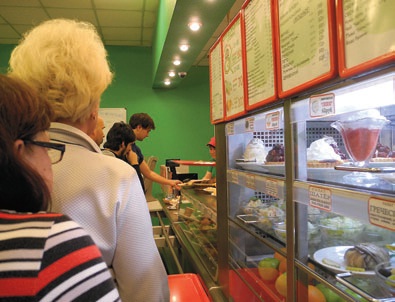 |
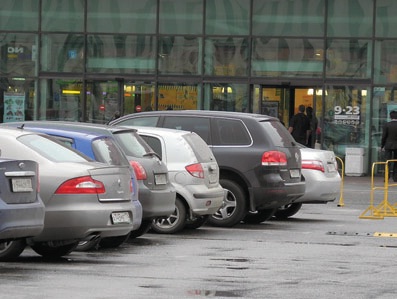 |
CONCLUSION
This paper focuses on the practical side of installing and using a video surveillance system in a hypermarket, taking into account the characteristics of various store zones, the range of goods sold, the tactics of committing thefts, etc.
Therefore, when considering the issues, no specific technical characteristics of the video cameras were given.
Which video cameras to use — stationary or mobile, analog or digital, box or dome, color or black and white — is ultimately determined only by the customer within the framework of his idea of the functionality of the video surveillance system and the amount of budget funds that the Company can afford to allocate for the implementation of the project for the installation of VHS.
The main goal of these recommendations is to make the video surveillance system the most effective and functional tool for preventing losses of a commercial enterprise.
It seems that a number of relevant topics can be considered in relation to the installation and practical use of a hypermarket video surveillance system, such as:
- holding a tender and selecting a contractor for the installation of a video surveillance system;
- forming a technical assignment and drawing up a diagram of a video surveillance system for an opening facility;
- negotiating and agreeing on contractual terms of installation and post-installation warranty (and possibly post-warranty) service;
- content and components of the contract for installation of a video surveillance system
- the need for control over the implementation of the installation project by the «customer», the possibility of adjusting the technical specifications during the installation process;
- the work of video surveillance system operators
- the importance of archiving video surveillance records, legal grounds for using them as evidence in court.
And so on and so forth.
But still, all the questions voiced are the subject of a separate conversation.
I would also like to remind you once again that all the recommendations provided cannot be automatically extrapolated to specific retail outlets, since our goal was to consider the most typical control zones found in almost every hypermarket of the format in question (of course, taking into account the features of the assortment matrix).
We would like to hope that this goal has been achieved.
V. Belov
Source: magazine «Security Algorithm» No. 5, 2011

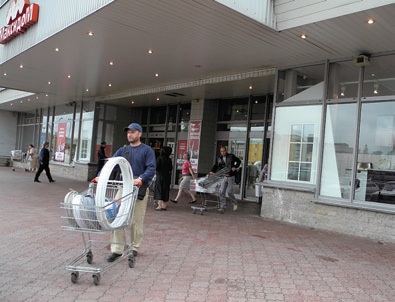
Добавить комментарий